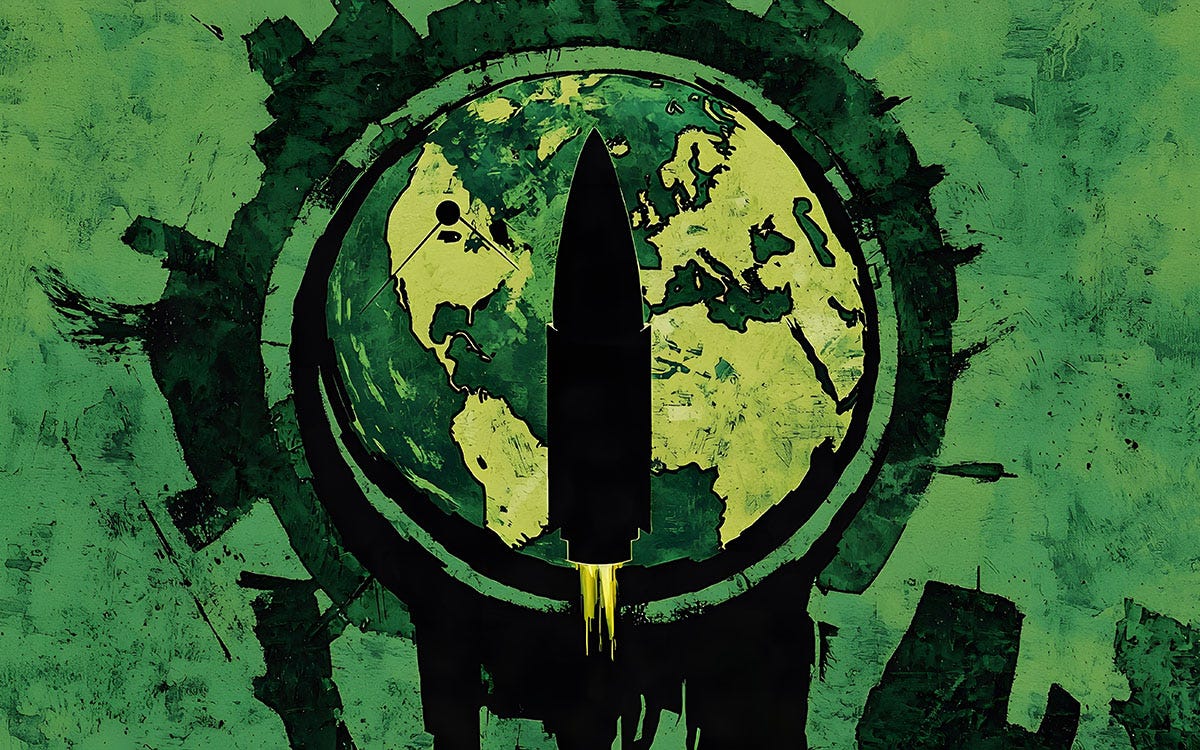why we don't need another round of nuke testing
Modern technology and computing made nuclear testing unnecessary. Modern politics make it insanely dangerous.
Perhaps one of the most prevailing ideas about Western politics today is often called the Everyone Is Twelve Principle. Every time a politician says or wants something we would consider immensely stupid, selfish, or irrational, we should just think of it as a spoiled tween having a tantrum and demanding something because it sounds cool in their heads, which are only capable of simplistic solutions to complex problems they don’t understand and will refuse to even try.
This isn’t meant to make us feel better by the way. It’s the ultimate fusion of pure id, unconstrained power, and a complete abdication of responsibility by our leaders. All that means the American ruling class are basically wealthy middle schoolers with no impulse control and no one to tell them no.
And you know what sounds really, really cool to most twelve year olds? Nukes. Which is why the belligerent 79 year old tween in the White House is demanding to start full blown nuclear tests after a 33 year long moratorium.
This is quite problematic since it breaks several treaties, would create nasty political and logistical nightmares because the tests have to happen somewhere — most likely in deep red areas of Nevada and Arizona — and aren’t simply unnecessary thanks to modern computing technology, but will also lead to Cold War era style escalations in nuclear proliferation and saber rattling.
But hey, it sounds awesome to our overgrown children in charge, so I guess why not? Look at all the other stuff we let them do because they threw a tantrum. Might as well let them try and end the world because they haven’t learned a thing since 1991 and don’t intend to suddenly start. You, however, may be wondering why anyone with lots of nukes and a long history of building them would suddenly want to test them again as a rational adult who asks reasonable questions.
remember to balance and rotate your nukes
Well, as I wrote back in the day in my old exhaustive guide to nuclear weapons, nukes, like cartons of milk, have an expiration date. Fissile materials that give them their yield aren’t stable. It’s kind of their whole point that they aren’t. They continue to decay and break down over decades, turning into lighter and lighter elements until one day, you end up with something like lead or iron.
Think of radioactive atoms as overheated pressure cookers on the verge of blowing their tops, shooting out steam at random intervals. The pressure is caused by having too many protons for the strong nuclear forces to keep under control, and the steam are the random subatomic bits being shot out at random intervals as the atom tries to settle into a more stable configuration. With nukes, we hijack that process and use a directed force to pry open these brittle atoms to get to the energy inside.
Now, the chain of decay can take thousands, if not billions of years to reach its inert endpoint because the lighter the elements into which they decay, the more stable the end result of the decay is, and the less prone they become to the quantum forces that are responsible for radiation in the first place. At some point though, the elements will be too light to start a proper chain reaction, meaning that the nuke will be a dud.
When you do maintenance on nuclear warheads, you test how much of the uranium or plutonium of extremely high purity is still radioactive enough to create a big bang, and if necessary, swap out decayed parts of the core with fresh weapons grade metals. It has to be done on a regular basis, otherwise the buildup of less fissile or inert nuggets in the core renders the whole thing useless.
One of the reasons a lot of military experts and generals don’t think that Russia really wants to use its nukes despite screaming about vaporizing the world twice on a good week and three times on a week with too many successful Ukrainian drones strikes, is because after the collapse of the Soviet Union, that maintenance was either shoddy or just not done, meaning there is no way for Russians to know if they just fired a dud or a doomsday device.
“we had to nuke the village to defend it”
So, what’s the easiest way to know that your warhead works as intended? Why, blow it up, of course! If it’s a dud, it will just fizzle out — see what I did there? — as only the high explosive “lens” detonates and the blast is many order of magnitude smaller. If a bomb is good to go, you’ll either get that iconic giant mushroom cloud or, much more likely today, feel the intense quake as it goes off underground with enough force for seismometers across the world to feel.
But a practical test leaves you with two of three problems. The first is that you might have just exposed your weapons as duds if they don’t work and you made a big show about the testing. The second is that if it does work, you now just nuked yourself and there’s all sorts of radiation poisoning the soil and the air which will get out and harm your own people and land over the long term. The third is that you’ve just shown the world a level of aggression it will not take lightly, and you’re down a good nuke.
You could have taken all the detailed measurements and ran the results through one of the supercomputers developed specifically to tell you with very high confidence if your warheads are in good working order without any of this — which is what the U.S. has been doing for decades now — with none of these side effects.
But no, you woke up and chose violence because you’re twelve, and violence is cool, and your dad can beat up their dad, so they better give you their lunch money before school. Consequences? Externalities? You’ve never heard of them.
Meanwhile, no sane general on Earth thinks American nukes are an empty threat or if when pushed, we won’t use them. To this day, the U.S. remains the only nation to ever deploy and use nuclear weapons in combat, so it’s not like there’s the whole will-they-won’t-they-can-they in the matter, as there is with Russia. And their only way to give us a moment’s hesitation based on 80 years of history? Build their own, and quickly, once again bringing back the MAD doctrine and taking it worldwide…




